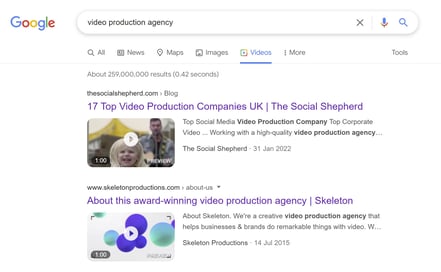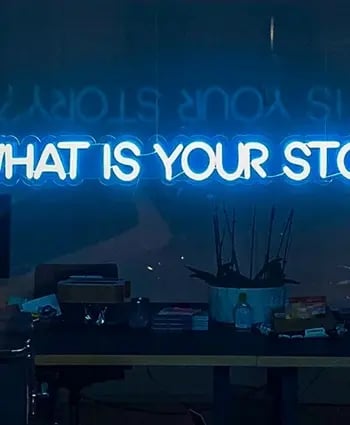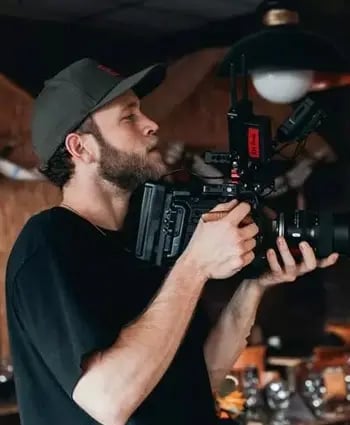How to optimise video for SEO
Want to get your videos ranking higher in search engines? Here are 7 tips for making that happen.
You may already know how to optimise your website pages for SEO like a pro, but how much do you know about optimising your video content for search?

Video SEO isn't the same as your regular SEO, and has changed a whole lot in the last few years. So if you've spent time and money on strategising and producing a compelling video for your business that doesn't seem to want to rank for search, ask yourself these 7 questions...
1. Where are you hosting your video?
Why do you want your videos to rank? Are you looking for brand awareness and thought leadership? Or are you trying to drive traffic and leads back to a page on your website?
Considering this will help you decide where you want to host your video. You'll want to explore something like Youtube or Vimeo if it's the former. But if you're more focused on gaining on-site traffic to push leads towards conversion, then exploring alternative hosting platforms that support this capability is the way to go.
For example, Venture uses Wistia, which automatically inserts SEO metadata (JSON-LD, the lightest weight and fastest of the bunch) to increase your chances of being indexed.
2. Is your video transcribed?
Transcripts are the copy of your video. So not only do they make videos more accessible for those who watch videos silently, but they also help search engines index and rank your videos for search queries and keywords.
3. Is your video thumbnail engaging?
The thumbnail of your video plays a huge role in how clickable your video is. Think of it like a book cover (which people do, in fact, judge books by).
You want it to be compelling, relevant and eye-catching.
4. Is your title and meta description optimised and engaging?
Just like they do for a blog post or web page, the title and meta description play their part in ranking your videos. So spend time on writing an engaging video title and description.
Do keyword research to ensure you're targeting keywords and search terms that people are actually searching for, but don't just stuff the title and description with loads of keywords like a robot, it still needs to be clickable and interesting to people.
5. Is the page your video's on also optimised for search?
Bad news, it may not be your video that's the problem...
If your video isn't ranking no matter how hard you try, it could be because the page your video is embedded on isn't optimised or is just not relevant enough to the video.
Pages featuring videos must be relevant and highly optimised to make sure your video can rank as high as possible.
6. Is the video you want to be ranked embedded first?
Google typically indexes only one video per page, as the search engine crawlers usually stop crawling for videos after that first video.
So if you're including multiple videos on a page, ensure that video is first.
7. Is your video above the fold?
On websites, hidden videos below the fold usually lead to low play rates because, honestly, people can't be bothered to go out of their way to scroll to find the video. More than that, search crawlers are far less likely to go out of their way to index a hidden video.
The best way to increase your video's chance of being crawled is to make it the star of its page. Nobody puts baby below the fold!
Final thoughts
You might create the most compelling, beautiful videos that speak to your target audience, but they won't go very far on their own.
That's why Venture has created a Video Activation guide that tells you everything you need to know about publishing (or 'activating') your video for optimum results. Download it below, soak up all the good free knowledge, and if you've got any questions, get in touch! We'd love to chat with you.

Written by Emily Malone Marketing Manager for Venture — a full-service video production agency that specialises in producing creative videos & campaigns that get real results.




